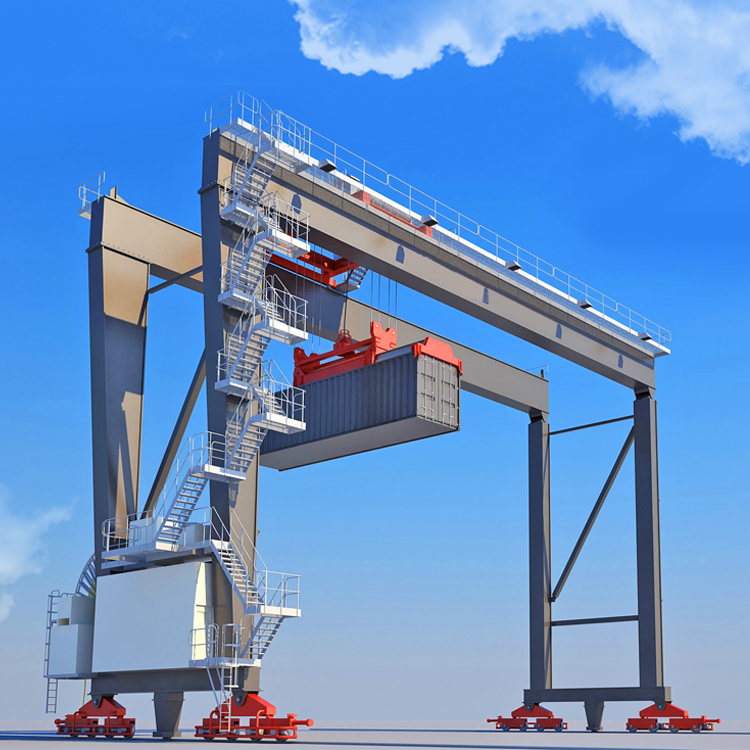RTG cranes are an important part of container loading and unloading operations in ports and terminals around the world. These cranes play a vital role in efficiently moving containers between ships, trucks and yards. But how exactly do RTG cranes work?
RTG cranes are designed to span multiple container lanes and are equipped with rubber tires that allow them to travel quickly and smoothly along the ground. Cranes are typically operated from a control room located on top of the structure, providing the operator with a clear view of the entire work area. The crane is powered by a diesel engine that drives the wheels and provides the hydraulic power needed to lift and lower the container.
Operation of the RTG crane begins with the arrival of the container at the yard. The crane operator receives instructions on which container to pick up and where to place it. Using a combination of joysticks and control panels, the operator maneuvers the crane into position and lowers the spreader, a specialized lifting equipment, onto the container. The spreader is securely locked onto the container so that the crane can lift it off the ground.
Once the container is lifted, the RTG crane can move it horizontally along the yard to the designated location. Rubber tires allow the crane to travel at relatively high speeds, allowing containers to move quickly in and out of storage areas. The crane operator carefully steers the crane through the rows of containers, ensuring the precise placement of each container.
One of the main advantages of RTG cranes is the ability to stack containers vertically, making efficient use of yard space. This vertical stacking capability maximizes the terminal’s storage capacity, allowing a large number of containers to be stored in a relatively small area.
In addition to their efficiency and versatility, RTG cranes are also known for their reliability and low maintenance requirements. The rugged design of these cranes combined with their durable rubber tires ensures they can withstand the demanding operating conditions of a busy port or terminal.
To sum up, RTG cranes are vital to the smooth and efficient loading and unloading of containers in ports and terminals. Their ability to lift, transport and stack containers with precision and speed makes them indispensable in global logistics chains. Understanding how these cranes work can give you insight into the complex processes involved in container handling and the important role RTG cranes play in transporting goods around the world.

Post time: Apr-10-2024







